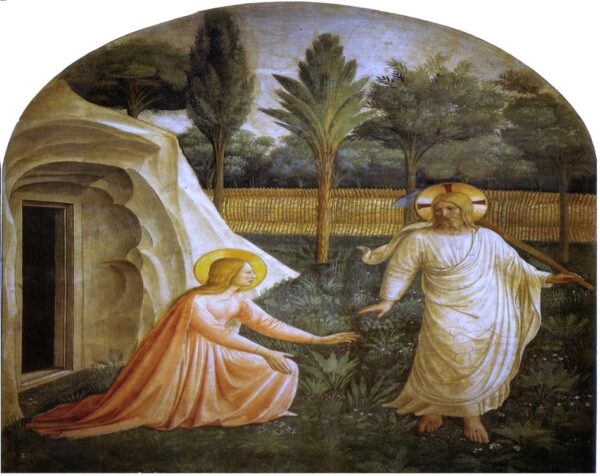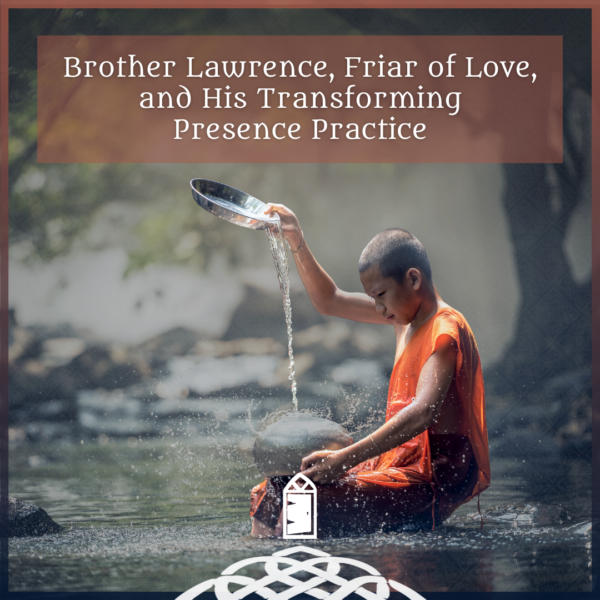Dearest monks, artists, and pilgrims,
This week we are featuring one of our Hildy Tails. This series of essays were composed last year for our Sustainers Circle. They were dictated to John by the Abbey’s mascot, Hildy the Monk-ey. Hildy is a bit of a free spirit who likes to entertain and doesn’t normally feel constrained by conventional story structure . . . or grammar, in general. She lives by the motto that “all stories are true; some actually happened.” We wanted to share them with you, our wider Abbey community, to give you a small monkey-sized, humorous perspective on some biblical passages and stories of the saints.
The Ark of God Captured & Death of Eli (1 Samuel 4)
Hi ye (that’s Galwegian for “Howdy ya’ll”)!
It’s Hildy, the Abbey of the Arts’ mascot (and my stenographer, John . . . who also helps with a bit of research and background info), with another odd tale from the Bible. Like last month, this one’s a bit obscure. It doesn’t come up in most lectionary cycles much, if at all . . . and you’ll know why in a bit.
But first: some background.
This story takes place after the Israelites return to the Promised Land, but before the establishment of the Nation of Israel under King David. The Jews do not have a capital city or even a unified kingdom. The Chosen People are still fairly nomadic, as is their most prized religious and cultural artifact: The Ark of the Covenant!
If you’ve seen “Indiana Jones and the Raiders of the Lost Ark,” you’ve seen a pretty good representation of what it would’ve looked like. It’s a large golden chest with golden angels on top. It contained the Ten Commandments (among a few other holy relics) that Moses himself brought down from Mount Zion. It also has handles for the people to carry it in processions . . . which they do a lot. (Who doesn’t like a good parade?) It’s also carried into battle, carried before them, much like armies would carry a flag into battle in yonder olden tymes. But for the most part, it was kept in a sacred tent (that eventually becomes The Temple in Jerusalem . . . but we’re not there yet in the Bible). The Ark is usually kept at Shiloh, but it moves about from time to time . . . when Yahweh orders it. (That last bit’s important.)
At this particular time, those orders from God came through the Priest Eli. Eli was a great and holy man. His sons . . . not so much. Besides abusing their power and position as priests, Hophni and Phinehas decided to take the Ark of the Covenant (without permission) into battle. They thought they could take the Ark, thought to be the throne of Yahweh on Earth, into battle and God would fight on their side. That is to say, they thought they could tell God where to go and who to fight . . . and not the other way ‘round.
Long story short: the Philistines win the battle, thousands of Israelites die (including Hophni and Phinehas), AND the Ark of the Covenant is captured. But don’t panic; that’s not the end of the story. The Israelites eventually get it back . . . but that’s a whole other story that John says we don’t have time to get into. (It’s not always easy telling where one story ends and the next one begins, as they all kind of flow into . . . You’re right, John. I’m getting distracted talking about how easily distracted I can get. Back to good old Eli.)
Eli, almost a hundred (I said he was old) and blind, was not at the battle. He knew his sons had taken the Ark without Yahweh’s blessing (not the first time Eli knew his sons had taken advantage of their positions for personal gain and not stopped them; nobody’s perfect and being a parent ain’t easy). When a surviving Israelite runs back, Eli is sitting on the outskirts of town, waiting.
The messenger tells Eli that the battle was lost. Eli is upset, but not surprised.
Then the messenger tells Eli that tens of thousands of Israelites were slaughtered. Eli is shocked at the scale of the defeat and is distraught.
Next, the messenger tells Eli that his sons are among the dead. Eli feared this might happen but is still devastated.
Finally, the messenger tells Eli that the Ark of the Covenant is now in the possession of the Philistines. And Eli falls over dead.
The oddly specific detail in the Bible is that Eli falls off the rock he’s sitting on (at the news about the Ark of the Covenant being lost, not any of the other news) and breaks his neck . . . because he’s old and fat.
Harsh, scripture writers; harsh! I mean, yes, Eli had his faults. He led the Israelites for forty years and had served them (and God) well. But when the people came to him about his sons’ deplorable behaviour . . . Eli didn’t really do anything, because they were his sons. So his death, along with those of his sons, is seen as justice. And all the other Israelite deaths are seen as the wages of sin and listening to false prophets. But still, describing Eli’s weight like that is literally adding insult to injury. It’s just an odd and unnecessary detail to put in the official record, is all I’m saying.
A couple of side notes: Phinehas’ wife, upon hearing the news, goes into labour and then also dies; & the Ark of the Covenant is eventually given back by the Philistines after suffering a series of plagues. But this month’s theme is Lament and so John thinks we should focus some more time talking about the tragedy of Eli’s death.
The way this story is written, the loss of the Ark is really the worst news (it’s what literally kills Eli). But it’s difficult for us today to understand the sheer magnitude of importance of that angelic gold box had for the ancient Israelites. There just isn’t any equivalent in modern society, even in a single country or culture. And while there’s plenty of equivalent events where tens of thousands of people die, it’s such a large number of people that this little monkey has trouble comprehending. (I mean that’s more people than the village I grew up in; it’s near half the population of the city I live in now.) It’s often too much for us to get our heads around and we (at least I) become numb to it.
But the death of one’s own children . . . that’s personal, that’s something even someone without any children like myself can understand. I’ll never know that level of loss and pain, but I can imagine, at least a fraction, of what that would feel like. So while I may not be able to properly lament an ancient cultural artifact or a massive tragedy of long ago, Eli’s loss I can lament.
And yet . . . I take some comfort in the fact that even across all that time and space and cultural differences, we can all lament with a parent’s great pain.
What do you lament, personally and collectively?
New dancing monk icon: St. Angela of Foligno
The world is pregnant with God. -Angela of Foligno
Angela 13th century is a mystic from Italy. She came from a wealthy family, married at a young age, and had seven children. At age 40, Angela had a vision of St. Francis, When her mother, husband, and children all died a few year later, Angela joined the Third Order of St. Francis and began writing several books on spirituality. She also helped found and support several religious communities of men and women dedicated to helping the needy.
Join me for Writing with the Ancestors!
Please consider joining me for my new program through the Rowe Center in October on Writing with the Ancestors (if you took the mini-retreat I led last year with this title, this is all new content).
With great and growing love,
Christine, John, and Hildy
Christine Valters Paintner, PhD, REACE and John Valters Paintner, MTS
Dancing monk icon by Marcy Hall (available purchase on Etsy)






